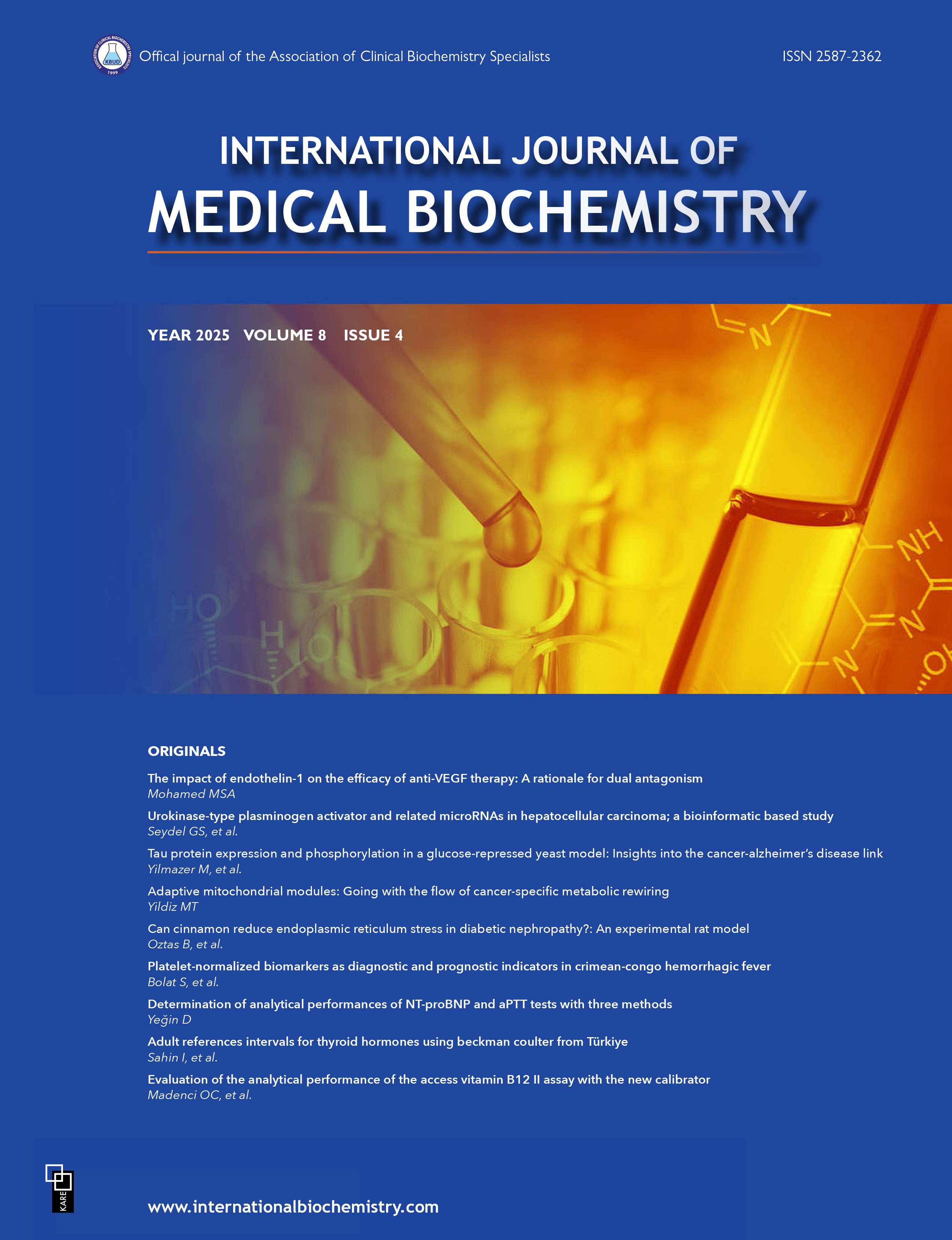Urokinase-type plasminogen activator and related microRNAs in hepatocellular carcinoma; a bioinformatic based study
Gonul Seyda Seydel1, Durmus Ayan21Department of Health Care Services, Nigde Omer Halisdemir University, Nigde Zübeyde Hanım Vocational School of Health Service, Nigde, Türkiye2Department of Medical Biochemistry, Nigde Omer Halisdemir University Faculty of Medicine, Nigde, Türkiye
INTRODUCTION: Hepatocellular carcinoma (HCC) is one of the most prevalent cancers worldwide. Urokinase-type plasminogen activator (uPA), which is encoded by the PLAU gene, is a serine protease involved in the degradation of the extracellular matrix. Increasing evidence indicates that PLAU is overexpressed in various cancers and is associated with poor prognosis, making it a potential biomarker for cancer. However, its potential role in HCC remains unclear. Therefore, this study aimed to investigate the role of PLAU and related microRNAs in HCC using multiple bioinformatics tools.
METHODS: PLAU expression was evaluated using the TNMplot and GEPIA2 databases. Promoter methylation levels were assessed through UALCAN. Survival analysis (overall survival (OS) and recurrence-free survival (RFS) rates), was conducted using the Kaplan-Meier Plotter. Protein-protein interaction networks were examined with STRING. Target miRNAs were identified using TargetScan 8.0. Differential expression, survival analysis, and coexpression of miRNAs were investigated using ENCORI.
RESULTS: PLAU expression was signifcantly upregulated in liver hepatocellular carcinoma (LIHC) compared to normal tissues (p<0.05). Promoter methylation level of PLAU was significantly increased (hypermethylation) in LIHC tissues (p=5.43×10¹²). Elevated PLAU expression was not associated with OS (p=0.16) and RFS (p=0.28) rates. hsa-miR-181a-5p, hsa-miR-181b-5p, hsa-miR-181c-5p, and hsa-miR-181d-5p were positively correlated with PLAU in LIHC tissue (p<0.05). The hsa-miR-181a-5p and hsa-miR-181b-5p were up-regulated in LIHC (p<0.05).
DISCUSSION AND CONCLUSION: In conclusion, our study highlights the potential role of PLAU and its related miRNAs (hsa-miR-181a-5p and hsa-miR-181b-5p) in HCC. However, elevated PLAU expression did not correlate with survival rates, indicating its involvement in tumor development but no prognostic signifcance. Further applicable studies are needed on this subject.
Keywords: Bioinformatic analysis, hepatocellular carcinoma, DNA methylation, microRNA, PLAU, prognosis, urokinase- type plasminogen activator
Manuscript Language: English







